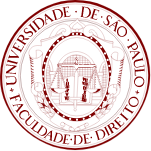Objetivos:
A disciplina objetiva discutir de forma crítica a extensão da jurisdição dos diversos tribunais internacionais, a partir de análise conceitual, jurisprudencial e teórica sobre temas que ainda não estão pacificados doutrinariamente e que reclamam soluções. O objeto de análise é tanto o Direito Internacional Público quanto o Direito Internacional Privado, sendo que, neste último, será analisado o impacto da utilização dos tribunais internacionais na formação de um universalismo concreto jusprivatista. O funcionamento de tribunais internacionais compõe um debate de vanguarda no Direito Internacional e uma das problemáticas mais recorrentes no papel do Direito Internacional como um instrumento da sociedade internacional, residindo aí seu maior mérito e importância, a sua instrumentalidade. Destaque-se que o estudo sobre os tribunais internacionais está consolidado nas mais importantes e respeitadas universidades do mundo e tem influenciado no estabelecimento de novas concepções sobre o papel do Direito Internacional, sua relação com o direito nacional, na realização material do direito atribuído a estados, indivíduos e outras coletividades, por isso, objetiva-se trazer para discussão questões ligadas ao fenômeno da jurisdicionalização do Direito Internacional e o impacto do funcionamento dos tribunais sobre o direito internacional e também sobre o ordenamento jurídico dos Estados. Nesse sentido, as discussões em aula serão voltadas para as formulações conceituais, teóricas e práticas do funcionamento dos Tribunais Internacionais e a eficácia material e formal contida no exercício de sua jurisdição, situando neste contexto os ordenamentos jurídicos nacionais, utilizando para isso obras de vanguarda que permitam discussão e reflexão sobre o tema na contemporaneidade do Direito, bem como questionar sobre sua autonomia didática como estudo com objeto próprio.
Bibliografia:
ASCENSIO, Hervé. La notion de jurisdiction internationale. In: La jurisdicitionnalisation du droit international. Societe Française pour le Droit International. Paris: Pedone, 2003.
AZAR, Ainda. L’exécution dês décisions de la cour internationale de justice. Bruxelles: Bruyland, 2003.
BENVENISTI, Eyal. The conception of international Law as a system. Tel Aviv: University Law School, Paper n. 83, 2008.
BLICHNER, Lars; MOLANDER, Anders. What is Juridification? Working paper. University of Oslo, Center for European Studies, 2005.
BOWETT, Derek William. Contemporary developments in legal techniques in the settlement of disputes. In: Recueil des cours, 1983, v. 180, n. II. pp. 169-235.
BOYLE, Alan. The proliferation of international jurisdictions and its implications for the court in the international court of justice: process, practice and procedure. Derek Bowett et al. (Eds.), 1997.
BRADFORD, William C. International legal compliance: surveying the field. University of Florida – Warrington College of Business. August 14, 2004.
CARVALHO RAMOS, André de. Direitos Humanos na Integração Econômica. Análise Comparativa da proteção de direitos humanos e conflitos jurisdicionais na União Europeia e Mercosul. Rio de Janeiro: Renovar, 2008.
_________ (Org). Direito Internacional Privado – Questões controvertidas. 1. ed. Belo Horizonte: Arraes Editores, 2016.
_________.Direito Internacional Privado e seus aspectos processuais: a cooperação jurídica internacional. In: CARVALHO RAMOS, André de; MENEZES, Wagner. (Orgs.). Direito Internacional Privado e a nova cooperação jurídica internacional. 1ed.Belo Horizonte: Arraes Editores, 2015,pp. 2-16.
_________. Pluralidade das Ordens Jurídicas. A Relação do Direito Brasileiro com o Direito Internacional. 1. ed. Curitiba: Juruá, 2012.
CARVALHO RAMOS, André de; GRAMSTRUP, E. F. Comentários à Lei de Introdução às normas do Direito Brasileiro – LINDB. São Paulo: Editora Saraiva, 2016.
CASELLA, Paulo Borba. Direito Internacional no Tempo Medieval e Moderno até Vitória. São Paulo: Atlas, 2012.
_________. Direito internacional no tempo moderno de Suarez a Grócio. São Paulo: Atlas, 2013.
_________. Direito Internacional no Tempo Clássico. São Paulo: Atlas, 2015.
CASELLA, Paulo Borba; ACCIOLY, Hildebrando; NASCIMENTO E SILVA, Geraldo Eulálio; Manual de Direito Internacional Público. São Paulo: Saraiva, 21ª edição (rev. e atual.), 2014.
CHARNEY, Jonathan I. Is international law threatened by multiple international tribunals? Recueil des Cours de l’Academie de Droit International de la Haye, 1998, v. 271.
______. The proliferation of courts and tribunals: piecing together the puzzle. Vanderbilt University, School of Law (Deceased). New York: University Journal of International Law, 1999, v. 31, pp. 697-708.
COGAN, Jacob Katz. Competition and control in international adjudication. Virginia Journal of International Law. 2007-2008, v. 48, n. 2.
GUY’OMAR, Geneviève. Le défaut des parties a un différend devant les jurisdictions internationales: études de droit international public positif. Paris: Librarie Générale de Droit et de Jurisprudence, 1960.
GUZMAN, Andrew T. International law: a compliance based theory. University of California, Berkeley – School of Law. UC Berkeley Public Law Research Paper n. 47, 2001.
______. International tribunals: a rational choice analysis. University of California, Berkeley – School of Law. University of Pennsylvania, Law Review, Forthcoming UC Berkeley Public Law Research Paper n. 1117613, 2008.
HAMMARSKJÖLD, Ake. Jurisdiction internationale. Leiden: Societé d´Editions A. W. Sijhoff, 1938.
HELFER, Laurence R.; SLAUGHTER. Why states create international tribunals: a response to professors posner and yoo. Woodrow Wilson School of Public and International Affairs California Law Review, 2005, v. 93.
HERIK, L. J. Van Den. The contribution of the Rwanda Tribunal to the development of international Law. Boston: Martinus Nijhoff Publishers, 2005.
HIGGINS, Rosalyn. International law and the avoidance, containment and resolution of disputes. General course on public international law. Recueil des cours, 1991, v. 230, n. V.
HUDSON, Manley O. International tribunals: past and future. Washington: Carnegie Endowment for International Peace and Brookings Institution, 1944.
INAZUMI, Mitsue. Universal jurisdiction in modern international law: expansion of national jurisdiction for prosecuting serious crimes under international law. Oxford: Intersentia, 2005.
INGADOTTIR, Thordis. The international criminal court: recommendations on policy and practice: financing, victims, judges and immunities. New York: Transnational Publishers, 2003.
JOUANNET, Emmanuelle. La notion de jurisprudence internationale en question. In: La jurisdicitionnalisation du droit international. Societe Française pour le droit international. Paris: Pedone, 2003.
KERBRAT, Yann. Forum shopping et concurrence des procédures contentieuses internationals. Bruxeles: Bruylant, 2011.
KINGSBURY, Benedict. The International Legal Order. New York University (NYU) – School of Law. NYU Law School, Public Law Research Paper n. 01-04; IILJ Working Paper n. 2003/1, pp. 684-686.
KLAMARIS, Nikolaos; EFSTRATIOU, Pavlos Michael. Access to justice as a fundamental right. Revue Hellenique de Droit International. Paris, 1998, v. 51, n. 1.
LOCK, Tobias. The European Court of Justice: what are the Limits of Its Exclusive Jurisdiction? University College London. Maastricht Journal of European and Comparative Law, 2009, v. 16, n. 3.
MACEDO, Stephen. The Princeton principles on Universal Jurisdiction. Princeton: Program in Law and Public Affairs, 2001.
______. Universal Jurisdiction. Pennsylvania: University of Pennsylvania Press, 2004.
MACKENZIE, Ruth. Law and policy of international courts and tribunals. Section B: Non-adjudicatory dispute resolution processes. University of London Press, 2005.
______; ROMANO, Cesare P.R.; SHANY, Yuval; SANDS, Philippe. Manual on international courts and tribunals. 2. ed. Nova York: Oxford University Press, 2010.
MECHICHI, Lotfi. Prolifération des jurisdictions internationales et unité de l’ordre juridique international. In : Justice et Jurisdctions Internationales. Paris: Pedone, 2000.
MENEZES, Wagner. Tribunais Internacionais: Jurisdição e Competência. São Paulo : Saraiva, 2013.
PALMETER, David. The WTO as a legal system: essays on International Trade Law and Policy. London: Cameron May, 2003.
______; MAVROIDIS, Petros C. Dispute Settlement in the World Trade Organization. Second edition. London: Cambridge University Press, 2004.
PASQUALUCCI, Jo M. The practice and procedure of the Inter-American Court of Human Rights. New York: Cambridge University Press, 2003.
PHILIP, M. Chistian; DE CARA, M. Jean-Yves. Nature et evolution de la jurisdiction internationale. In: La jurisdiction internationale permanente. Colloque de Lyon. Societé Fraçaise pour le Droit Internationale. Paris: Pedone, 1987. p. 3-43.
REYDAMS, Luc. Universal jurisdiction: international and municipal legal perspectives. New York: Oxford University Press, 2003.
ROMANO, Cesare P. R. The proliferation of international judicial bodies: the pieces of the puzzle. Journal of International Law and Politics. New York University, 1999, v. 31, n. 709.
______. International Dispute Settlement. Loyola-LA Legal Studies Paper n. 2007-14; Oxford Handbook of International Environmental Law, 2007.
ROSA, Anne-Marie la. Jurisdictions pénales internationales: la procédure et la preuve. Paris: Presses Universitaires de France, 2003.
RYNGAERT, Cedric. Jurisdiction in international law. New York: Oxford University Press, 2008.
SHANY, Yuval. The competing jurisdictions of international courts and tribunals. The Project on International Courts and Tribunals (PICT). Oxford University Press, 2003.
______. Regulating jurisdictional relations between national and international courts. Oxford University Press: New York, 2009.
SHANY, Yuval. No longer a weak department of power? Reflections on the emergence of a new international judiciary. European Journal of International Law, 2009, v. 20. n. 1. p. 87-91. pp. 87. Disponível em: <http://www.ejil.org/pdfs/ 20/1/1775.pdf>.
______. Compliance with decisions of international courts as indicative of their effectiveness: a goal-based analysis. Hebrew University of Jerusalem. Faculty of Law and Institute of Criminology. Hebrew University of Jerusalem Faculty of Law Research Paper n. 04-10. October 24, 2010.
______. Assessing the effectiveness of international courts: can the unquantifiable be quantified? Hebrew University of Jerusalem. Faculty of Law and Institute of Criminology. Hebrew University International Law Research Paper n. 3-10. September 1, 2010.
SPAIN, Anna. Using international dispute resolution to address the compliance question in international law.
STEPHENS, Tim. Multiple international courts and the “Fragmentation” of international environmental law. University of Sydney – Faculty of Law. Sydney Law School Research Paper n. 07/14. Australian Year Book of International Law, 2006, v. 25.
TOMUSCHAT, Christian. International Courts and Tribunals. In: Max Planck Encyclopedia of Public International Law, 1981, v. 1.
______. International law: ensuring the survival of mankind on the eve of a new century: general course on public international law. In: Recueil des cours, 1999, v. 281. pp. 9-438.
TREVES, Tullio. Lê controversie internazionali: nuovi tendeze, nuovi tribunali. Milano: Giuffrè editore, 1999.
______. Le tribunal international du droit de la mer et la multiplication des juridictions internationales. Rivista di Diritto Internazionale. Milano: Giuffré Editore, 2000, v. 3.
ZARING, David T. Rulemaking and adjudication in international law. University of Pennsylvania. Legal Studies Department. Society of International Economic Law (SIEL) Inaugural Conference 2008 Paper, July 8, 2008.
ZIMMERMANN, Andreas; HOFFMANN, Reiner; GOETERS, Hanna. Unity and diversity of international law. Berlin: Duncker & Humblot, 2006.



